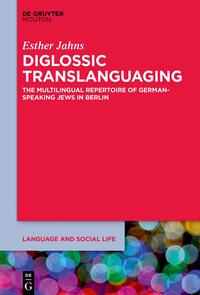
This book examines how German-speaking Jews living in Berlin make sense and make use of their multilingual repertoire. With a focus on lexical variation, the book demonstrates how speakers integrate Yiddish and Hebrew elements into German for indexing belonging and for positioning themselves within the Jewish community. Linguistic choices are shaped by language ideologies (e.g., authenticity, prescriptivism, nostalgia). Speakers translanguage when using their multilingual repertoire, but do so in a diglossic way, using elements from different languages for specific domains.